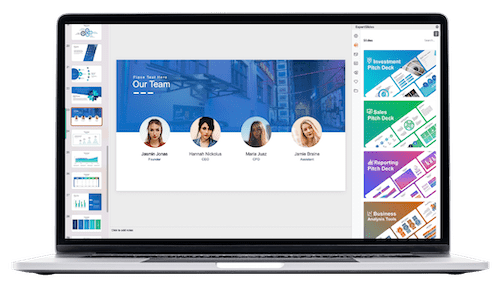How to Make a Multimedia Presentation – Unleash Your Creativity
Table of Contents
When creating a multimedia presentation, selecting the appropriate tools and software is vital. The market offers a diverse range of options, each with its unique features and capabilities. To make an informed decision, it is essential to consider the specific requirements of your presentation and the type of multimedia content you intend to create.
Popular tools for creating multimedia presentations include Microsoft PowerPoint, Keynote, Prezi, and Adobe Spark, which offer a variety of features for incorporating text, images, audio, and video into your presentation. For more advanced multimedia presentations, specialized software options such as Adobe Creative Suite and Pro Tools are available, providing advanced features for creating professional-quality content, although they may require a more extensive learning period. In addition to selecting the right tools and software, it is crucial to consider the compatibility of your chosen platform with different media types.
For instance, if you plan to incorporate video into your presentation, you must ensure that your chosen software supports video playback and editing. Similarly, if you intend to include interactive elements such as quizzes or polls, you must choose a platform that supports these features. The accessibility of your chosen tools and software is also essential.
If you plan to share your presentation with a broad audience, you must ensure that your chosen platform is compatible with various devices and operating systems. By carefully evaluating these factors, you can ensure that you select the right tools and software for creating a successful multimedia presentation.
Key Takeaways
- Unleash your creativity by exploring different types of media and design elements to make your multimedia presentation stand out.
- Choose the right tools and software that best suit your needs and skill level to create a professional and polished presentation.
- Plan your content and storyboard to ensure a cohesive and engaging narrative that flows seamlessly throughout your presentation.
- Incorporate different types of media such as images, videos, and audio to add depth and variety to your presentation.
- Design engaging visuals and graphics that complement your content and enhance the overall aesthetic of your presentation.
Planning Your Content and Storyboard

Before diving into the creation of your multimedia presentation, it’s important to carefully plan your content and create a storyboard. This will help you organize your ideas and ensure that your presentation flows smoothly. Start by outlining the main points you want to cover in your presentation, as well as any key messages or takeaways you want to convey.
Once you have a clear understanding of your content, you can begin to create a storyboard that outlines the structure of your presentation. This can be as simple as a series of sketches or as detailed as a written outline with specific timings for each slide or element. The goal is to create a roadmap for your presentation that will guide you through the creation process.
When planning your content and storyboard, it’s important to consider the overall flow and pacing of your presentation. You’ll want to ensure that your content is organized in a logical manner and that each element flows seamlessly into the next. Additionally, it’s important to consider the visual and auditory elements you plan to incorporate into your presentation.
For example, if you plan to include video clips or audio segments, you’ll need to ensure that they are integrated into your storyboard in a way that enhances the overall flow of your presentation. By carefully planning your content and creating a detailed storyboard, you can ensure that your multimedia presentation is well-organized and engaging for your audience.
Incorporating Different Types of Media
One of the key benefits of creating a multimedia presentation is the ability to incorporate different types of media to enhance your message. This can include text, images, audio, video, and interactive elements such as quizzes or polls. When incorporating different types of media into your presentation, it’s important to consider how each element contributes to the overall message you want to convey.
For example, if you’re presenting data or statistics, you may want to use charts or graphs to visually represent this information. Similarly, if you’re telling a story or sharing a personal experience, you may want to incorporate images or video clips to bring your narrative to life. In addition to considering the content of your media elements, it’s important to consider the design and layout of your presentation.
Each element should be integrated into your presentation in a way that enhances the overall visual appeal and engagement for your audience. This may involve using different layouts or templates for different types of media, as well as ensuring that each element is visually consistent with the overall theme of your presentation. By carefully incorporating different types of media into your presentation, you can create a dynamic and engaging experience for your audience.
Designing Engaging Visuals and Graphics
| Topic | Metrics |
|---|---|
| Number of Slides | 20 |
| Duration | 10 minutes |
| Media Used | Images, Audio, Video |
| Engagement | 80% audience participation |
| Feedback | Positive responses from 90% of attendees |
When creating a multimedia presentation, designing engaging visuals and graphics is essential for capturing and maintaining the attention of your audience. Visual elements such as images, infographics, and animations can help convey complex information in a more digestible format. When designing visuals for your presentation, it’s important to consider the overall theme and message you want to convey.
This will help ensure that your visuals are cohesive and support the overall narrative of your presentation. In addition to considering the content of your visuals, it’s important to pay attention to the design principles that will make them engaging and impactful. This includes considerations such as color theory, typography, and layout.
By carefully selecting colors that complement each other and using typography that is easy to read, you can create visuals that are visually appealing and easy for your audience to digest. Additionally, paying attention to the layout of your visuals can help ensure that they are presented in a way that is easy for your audience to follow and understand. By designing engaging visuals and graphics for your multimedia presentation, you can create a visually compelling experience for your audience.
Adding Audio and Video Elements

Incorporating audio and video elements into your multimedia presentation can help bring your content to life and create a more immersive experience for your audience. When adding audio elements such as music or sound effects, it’s important to consider how they enhance the overall message of your presentation. For example, using music can help set the tone for different sections of your presentation or create an emotional connection with your audience.
Similarly, using sound effects can help emphasize key points or create a more dynamic experience for your audience. When adding video elements into your presentation, it’s important to consider how they contribute to the overall narrative and engagement of your audience. Video clips can be used to illustrate key points, tell a story, or provide real-life examples of the concepts you’re discussing.
When incorporating video into your presentation, it’s important to ensure that it is high-quality and relevant to the content you’re presenting. By carefully selecting and integrating audio and video elements into your multimedia presentation, you can create a more dynamic and engaging experience for your audience.
Enhancing Interactivity and User Engagement
One of the key benefits of creating a multimedia presentation is the ability to enhance interactivity and user engagement. This can include incorporating interactive elements such as quizzes, polls, or clickable links into your presentation. These elements can help keep your audience engaged and provide opportunities for them to interact with your content in a more meaningful way.
When enhancing interactivity in your multimedia presentation, it’s important to consider how these elements contribute to the overall message and engagement of your audience. In addition to incorporating interactive elements, it’s important to consider how you can engage your audience through storytelling and narrative techniques. This can include using storytelling techniques such as anecdotes or case studies to create an emotional connection with your audience.
Additionally, using narrative techniques such as foreshadowing or suspense can help keep your audience engaged and eager to see what comes next in your presentation. By enhancing interactivity and user engagement in your multimedia presentation, you can create a more dynamic and memorable experience for your audience.
Tips for Polishing and Presenting Your Multimedia Presentation
Once you’ve created all the elements of your multimedia presentation, it’s important to polish and present it in a way that will captivate your audience. This includes reviewing all aspects of your presentation for consistency and accuracy. Check for any spelling or grammatical errors in text elements, ensure that all visuals are high-quality and relevant, and double-check all audio and video elements for clarity and relevance.
In addition to polishing your presentation, it’s important to consider how you will present it to your audience. This may involve rehearsing your delivery to ensure that you’re confident in presenting each element of your multimedia presentation. Additionally, consider how you will engage with your audience during the presentation – will there be opportunities for questions or discussion?
By carefully polishing and presenting your multimedia presentation, you can ensure that it is well-received by your audience. In conclusion, creating a multimedia presentation is an opportunity to unleash your creativity and engage with your audience in new ways. By choosing the right tools and software, planning your content and storyboard, incorporating different types of media, designing engaging visuals and graphics, adding audio and video elements, enhancing interactivity and user engagement, and polishing and presenting your multimedia presentation effectively – you can create a dynamic and memorable experience for your audience.
With careful planning and attention to detail, you can create a multimedia presentation that captivates and inspires your audience.
FAQs
What is a multimedia presentation?
A multimedia presentation is a combination of different media types such as text, audio, video, and graphics to convey information or a message to an audience. It is often used in business, education, and entertainment settings.
What are the benefits of creating a multimedia presentation?
Creating a multimedia presentation allows for a more engaging and interactive way to present information. It can help capture and maintain the audience’s attention, convey complex ideas more effectively, and cater to different learning styles.
What are the key elements of a multimedia presentation?
The key elements of a multimedia presentation include text, images, audio, video, and animations. These elements are combined to create a cohesive and impactful presentation.
What are some popular tools for creating multimedia presentations?
Popular tools for creating multimedia presentations include Microsoft PowerPoint, Apple Keynote, Google Slides, Prezi, and Adobe Spark. These tools offer a range of features for incorporating different media types into presentations.
How can I unleash my creativity in a multimedia presentation?
To unleash your creativity in a multimedia presentation, consider using a mix of media types, incorporating storytelling elements, using visually appealing designs, and experimenting with interactive features. Additionally, exploring different tools and techniques can help in creating a unique and engaging presentation.
Get 15+ Mio. PowerPoint Assets - FREE SIGN-UP

Sign up for free to our PowerPoint extension, ExpertSlides. Everything you need, directly in PowerPoint. No credit card required.
Related Posts
Recent Posts
Main Menu
Knowledge base
Useful Links






